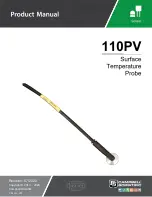
22
EB 2640 EN
Cleaning and maintenance
Note:
The plug stem is guided by ball bear
-
ings in the guide flange. On pulling
off the guide flange, the ball bear
-
ings embedded in food grade lubri
-
cant are exposed and might fall out.
6.
Carefully pull the guide flange (5) off.
Take the ball bearings out of the guiding
grooves and keep them at hand for the
following assembly.
7. Replace the diaphragm unit with a new
one.
8. Reassemble the parts in the reverse or
-
der. Carefully place the actuator housing
onto the valve body. Make sure that the
threaded bore at the side is aligned with
the locking screw and that the dia
-
phragm rests neatly in place.
9.
Position the clamp fitting. Grease the
groove and screw with food grade lubri
-
cant. Hit the clamp lightly with a plastic
hammer and tighten the clamp screw
again until the parts fit properly.
Type 2371-11 · Replacing the diaphragm
unit together with the flange section
The diaphragm is replaced as a complete
unit together with the guide flange (5), plug
stem (3.2) inside of it as well as the plug
support (3.1). It may be necessary to replace
the diaphragm assembly when too much
clearance arises between the guide flange
and plug stem after a long service life.
How to proceed:
Type 2371-11
∙ Guide flange (5), inside plug stem
(3.2), diaphragm (4) and plug support (3.1) ∙ The plug
must be unscrewed for removal.
Fig. 12:
Replacing the diaphragm unit together
with the flange section
6.5 Replacing the two dia-
phragms
Type 2371-10 · Two diaphragms
The two diaphragms are clamped from the
outside between the valve body (1) and cov
-
er (1.1). Inside the plug support and plug
stem that are bolted together guide the dia-
phragms. The internal and external spacing
rings (20) are located between the two dia
-
phragms.
To replace the diaphragms, first pull the cov
-
er (valve bonnet) off the valve body (bottom
5
3.2
4
3.1















































